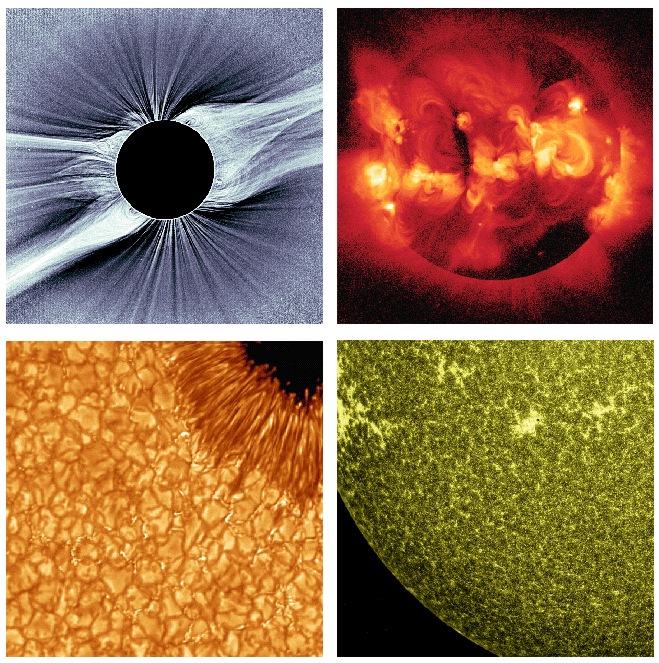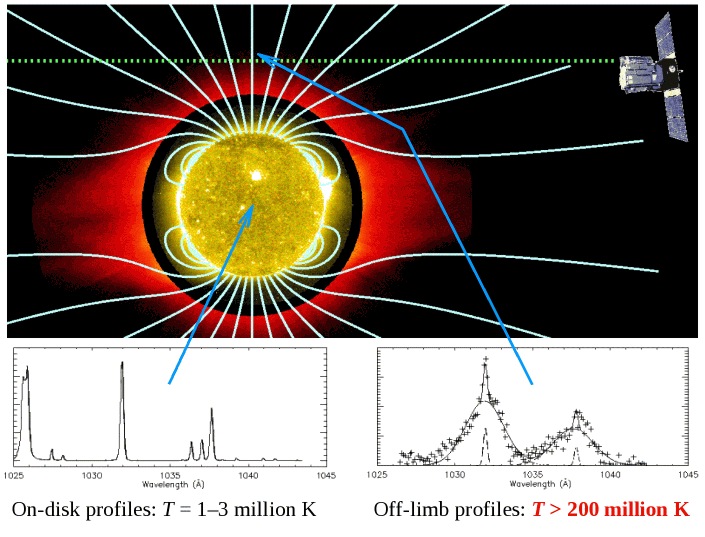However, beneath the Sun's surface is a layer of gas undergoing vigorous convective boiling. This chaotic activity, and its interaction with the Sun's complex magnetic field, gives rise to solar activity that extends far out into the solar system.

The above shows a selection of solar images that focus in on progressively smaller magnetic structures. Clockwise from top-left: (1) Radially filtered white-light image of a total solar eclipse from 2008 August 1. (2) Yohkoh image of the soft X-ray corona from 1991; (3) AIA/SDO 160 nm continuum image of the chromospheric supergranular network, from 2013 September 20; (4) BBSO New Solar Telescope 706 nm TiO-band image of photospheric granulation, from 2010 July 2. Each panel's horizontal field of view spans approximately 7, 2.5, 0.8, and 0.04 solar radii (in the same clockwise order).
I began working in solar physics when I came to the Harvard-Smithsonian Center for Astrophysics in 1996. Since one of the primary topics of my Ph.D. thesis work was radiative transfer, the first thing I did upon starting to work for the UVCS group was to spend time understanding the actual diagnostics (ultraviolet emission lines, white-light polarization, etc.) that are used to infer things like density, velocity, and temperature in the corona.

After UVCS discovered that heavy ions in the corona are often far out of thermal equilibrium with the rest of the gas, I moved on to explore the physical processes that can give rise to such strange conditions. This led to more in-depth studies of things like ion cyclotron resonance, nonlinear waves in plasmas, and magnetohydrodynamic turbulence. Around 2006 this morphed into attempts to simulate the "whole shebang" of waves, turbulence, coronal heating, and solar wind acceleration in a single self-consistent model (see the first paper from 2007 in that effort), and we've been working on these kinds of things ever since.
Over the years, I've also been quite interested in observational techniques that use coronagraphic occultation; i.e., blocking out the light from the Sun (or another star) in order to view the much fainter scattered light from surrounding regions. In 2016, I was a coauthor on a paper that analyzed STEREO data of this kind to reveal new features of the expanding solar wind (see NASA press release, with cool movies). Since then, I've been a member of the team that's working to launch NASA's PUNCH explorer mission that will perform regular, global, deep-field imaging of the accelerating solar wind...
